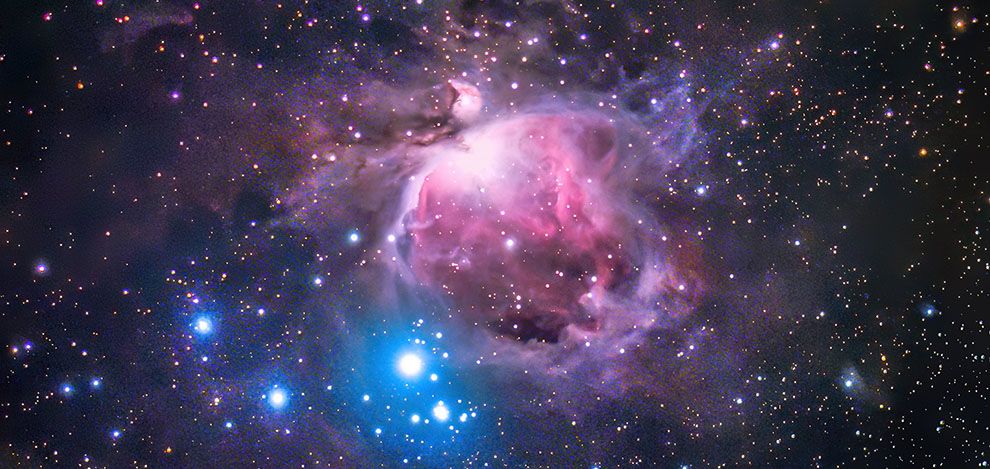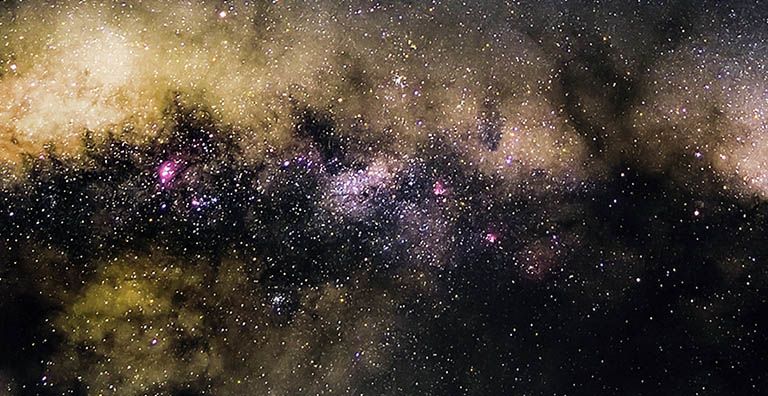
Rosette Nebula (SHO), 2019
5,000 light years away from our planet, an open cluster of young and bright suns excite nearby atoms to produce this flowery nebula, the Rosette Nebula.
Tech Card
Date / Location
26th & 27th February, 25th, 28th March 2019, Bedworth, GMT+0, United Kingdom, Bortle Class 5 ~SGM: 19.57 mag./arc sec2
Equipment
Camera: ZWO ASI 1600MM-PRO USB 3.0 Mono (Type CMOS)
Sensor Cooling Temperature: -15C
Filters: 1.25" 5nm Astrodon Ha, 1.25" 3nm Astrodon OIII, 1.25" 3nm Astrodon SII
Imaging Telescope: Takahashi FS-60CB
Correcting Lens: Takahashi Reducer 0.72x (composite focal length at 264mm and focal ratio at f/4.9)
Mount: iOptron CEM25EC
Image Quality
12Bit ADC (FITS)
Exposure time per image / number of composites and sensitivity
50 x 180" Ha subs (Unity Gain, Gain: 139, Offset: 21, Binning 1x1)
42 x 180" OIII subs (Unity Gain, Gain: 139, Offset: 21, Binning 1x1)
42 x 180" SII subs (Unity Gain, Gain: 139, Offset: 21, Binning 1x1)
Total Integration Time
6hrs 42mins
Calibration Frames
20 Darks, 20 Flats
Software
PixInsight 1.8 Core
Photoshop
SharpCap



